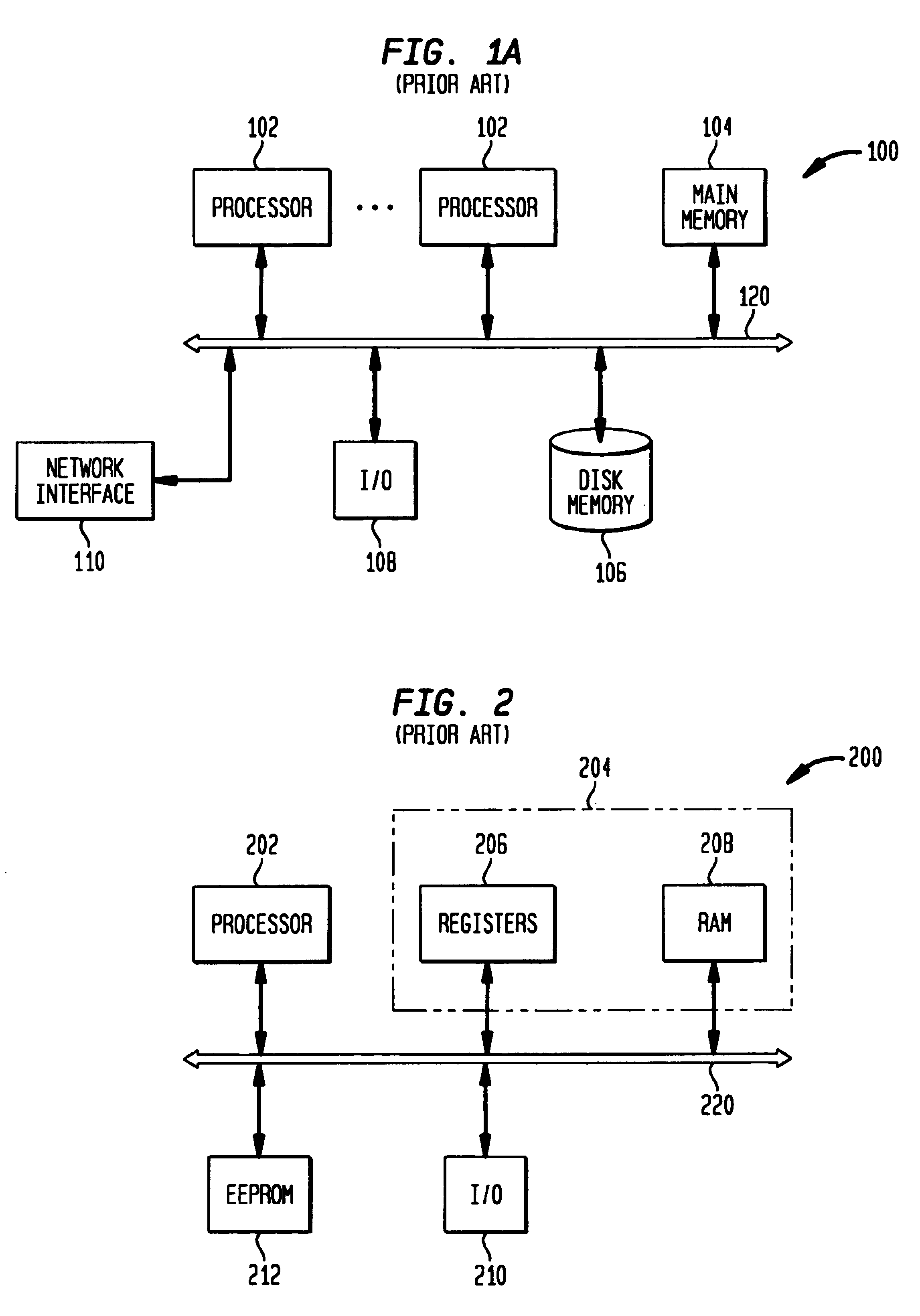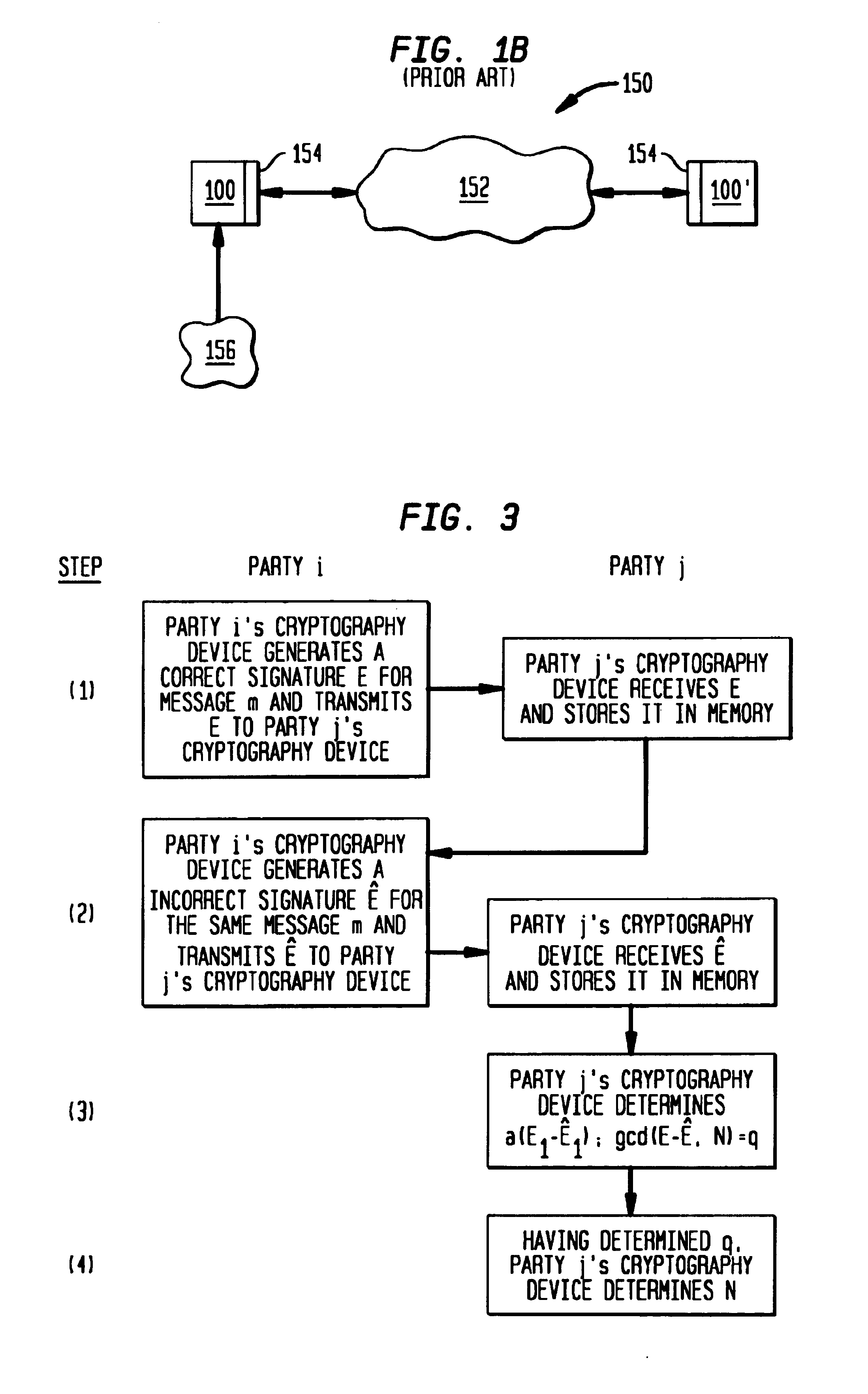Method of using transient faults to verify the security of a cryptosystem
- Summary
- Abstract
- Description
- Claims
- Application Information
AI Technical Summary
Benefits of technology
Problems solved by technology
Method used
Image
Examples
Embodiment Construction
[0053]The present invention is described in the following sections:[0054]I. Types of Faults which may occur which permit certain cryptosystems to be cracked are described with reference to FIG. 2.[0055]II. Cracking Cryptographic Signature Implementations that Use the Chinese Remainder Theorem is described with reference to FIGS. 3 and 4, including discussion of the RSA Signature Scheme and the Chinese Remainder Theorem, Cracking the RSA Signature Scheme, and Cracking the Rabin Signature Scheme.[0056]III. Using Register Faults To Break Cryptosystems is described with reference to FIGS. 5, 6A, 6B, and 7, including discussion of Using Register Faults to Attack the Fiat-Shamir Authentication Scheme, Using Register Faults to Crack Schnorr's Authentication Scheme, and Using Register Faults to Crack Other RSA Implementations.[0057]IV. Providing Cryptosystems and Cryptography Devices which Resist Tampering Due to Hardware Faults is described.[0058]V. A Conclusion is provided.
I. Types of Fau...
PUM
 Login to View More
Login to View More Abstract
Description
Claims
Application Information
 Login to View More
Login to View More - R&D
- Intellectual Property
- Life Sciences
- Materials
- Tech Scout
- Unparalleled Data Quality
- Higher Quality Content
- 60% Fewer Hallucinations
Browse by: Latest US Patents, China's latest patents, Technical Efficacy Thesaurus, Application Domain, Technology Topic, Popular Technical Reports.
© 2025 PatSnap. All rights reserved.Legal|Privacy policy|Modern Slavery Act Transparency Statement|Sitemap|About US| Contact US: help@patsnap.com



